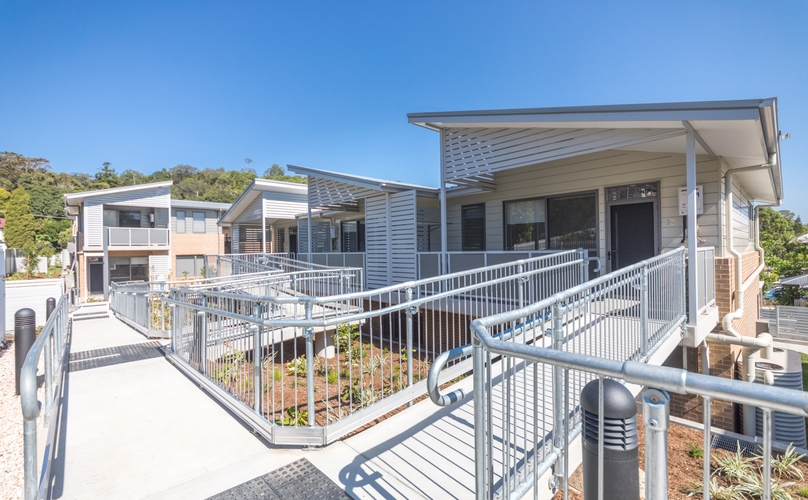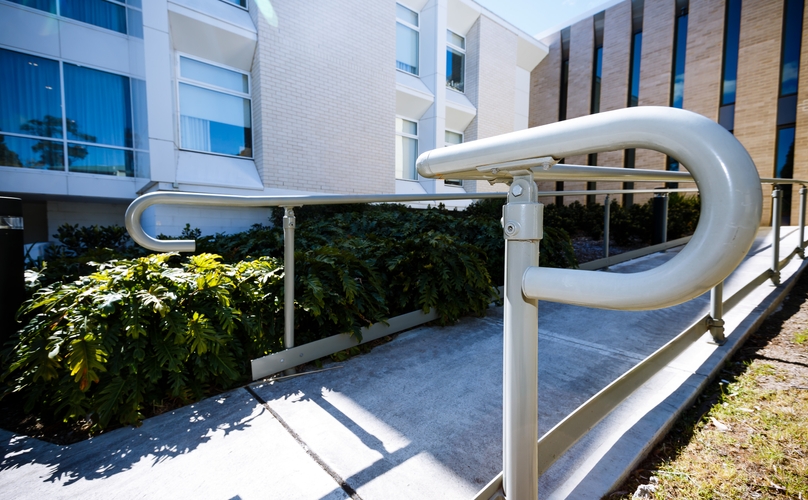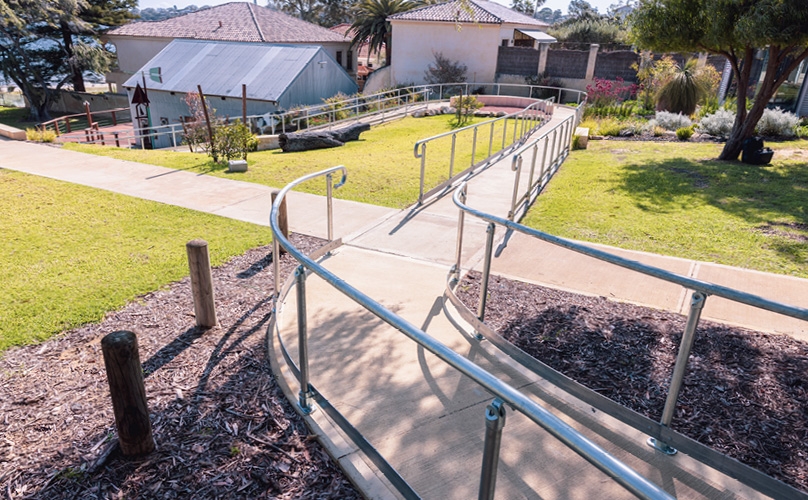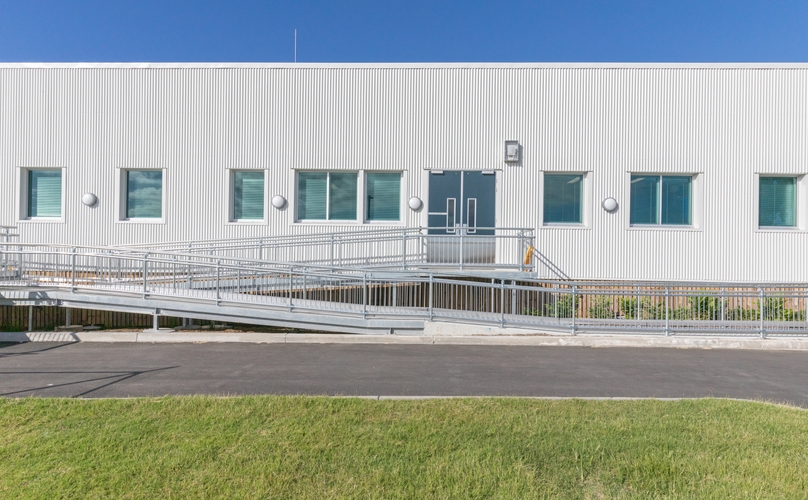The inclusion of handrails in healthcare projects, such as hospitals, is not merely a functional element but a crucial aspect of design. Handrails serve as silent guardians, guiding and supporting patients, staff, and visitors alike as they navigate the often complex outdoor environments of healthcare facilities. These handrails, bridging the spaces between interconnecting buildings or lining outdoor walkways, are more than mere safety features; they are integral to the overall accessibility and usability of healthcare spaces.

The Role of Handrails in Healthcare Settings
Healthcare environments, encompassing a broad spectrum from sprawling hospital complexes to intimate clinics, are unified in their purpose: to provide professional medical care and support. This category includes a diverse array of facilities, such as outpatient surgical centres, birth centres, blood banks, nursing homes, rehabilitation centres, and urgent care clinics. These places predominantly cater to individuals who might be elderly or temporarily debilitated due to illness or surgery. Handrails in healthcare settings play a pivotal role, extending beyond basic functionality to ensure the safety and well-being of those who frequent these spaces. Particularly in outdoor areas, they are vital for providing stability and support on varied terrains such as slopes, stairs, and uneven paths. Their presence is not just about aiding mobility but also about instilling a sense of confidence and independence in patients, many of whom may be navigating physical challenges or recovery.
In the current health climate, heightened by the COVID-19 pandemic, the challenge of maintaining stringent hygiene standards to prevent germ spread has never been more critical. This context has placed a spotlight on the importance of selecting materials that contribute to a hygienic environment. Handrails, in this regard, are not just physical supports but also key elements in the broader strategy of infection control within healthcare settings. Opting for handrail materials that are designed to minimize germ transmission is an imperative choice. When these materials also encapsulate superior functionality, they represent the pinnacle of thoughtful design, marrying the crucial aspects of safety and hygiene in healthcare environments.
This approach to handrail selection and installation underscores the dual objective of providing physical support and enhancing the sanitary conditions of healthcare facilities. By prioritizing materials that serve both these needs, healthcare architects and designers are equipped to create spaces that are safe, accessible, and conducive to the well-being of all users.

Design Considerations for Handrails
Safety and Accessibility: The primary concern in handrail design is ensuring safety and accessibility. Key features include appropriate handrail height, which should be within a range that accommodates most users, and a grip size that allows for easy and comfortable holding. Additionally, the placement and continuity of handrails play a critical role in aiding navigation, particularly for individuals with visual impairments or mobility challenges. These elements should meet the DDA requirements, ensuring that handrails are not just installations but integral parts of an inclusive environment.
Hygiene: In a healthcare setting, hygiene is a crucial consideration. Materials for handrails should be easy to clean and maintain, with surfaces that can withstand frequent disinfection. This aspect is particularly important in outdoor settings, where exposure to natural elements can affect cleanliness. Choosing materials that are resistant to corrosion, weathering, and staining is essential to maintain hygiene standards in these critical environments.
Aesthetic Integration: While functionality is paramount, aesthetics cannot be overlooked. The choice of materials, finishes, and design styles should complement the architectural language of the healthcare facility. Stainless steel, powder-coated metals, and even wood can be used, depending on the environment and desired look. The challenge lies in blending these handrails seamlessly into the existing structures, enhancing the overall visual appeal without sacrificing their primary purpose of safety, support, and hygiene.

Compliance with Local Standards
In Australia, compliance with the Disability Discrimination Act (DDA) and Australian Standards (AS), particularly AS 1428, is essential when specifying handrails for healthcare projects or any public infrastructure. These regulations ensure that spaces are accessible and usable by people with disabilities, including those who use mobility aids such as wheelchairs and scooters.
Moddex has created ‘The Ultimate Guide to Handrail & Balustrade Compliance’. You can download it for free here.
DDA and Australian Standards for Handrails:
Disability Discrimination Act 1992 (DDA): The DDA aims to protect individuals from discrimination in many areas of public life due to their disability. It mandates that public places must be accessible to everyone, including those with disabilities. This encompasses the need for ramps, modified stairways, and the inclusion of handrails to make these areas navigable and safe.
AS 1428.1-2021 Guidelines: AS 1428.1 specifies the requirements for handrails to ensure they are compliant with the DDA. Key points include:
- Handrail Height: The top of the handrail must be between 865mm and 1000mm from the nosing of the stair or the floor level on ramps and walkways. This height must be consistent across the ramp, stairway, and any landings.
- Design Requirements: Handrails should have a circular or elliptical cross-section, with a diameter of 30mm to 52mm. There must be a clear space of at least 50mm between the handrail and any adjacent walls or obstructions, and a clear space of 600mm above the handrail is also required. Importantly, there should be no obstructions to the passage of a hand along the rail.
- Handrail Clearance: A minimum clearance of 1000mm is required between both handrails on either side of a stair or ramp.
Practical Application: When implementing these guidelines, it’s important to consider the specific needs of the healthcare facility or public space in question. This includes evaluating the existing infrastructure, the anticipated flow of traffic, and the unique needs of the facility’s users. Collaboration with designers, architects, and compliance experts can ensure that all handrails and accessibility features not only meet legal requirements but also enhance the usability and safety of the space for everyone.

Case Study: Caboolture Hospital Outpatients Carparks
The Caboolture Hospital Outpatients Carparks project by Moddex is an exemplary case of effective handrail implementation in a healthcare setting. In this project, our Conectabal® – Commercial Balustrades were strategically installed to enhance the safety and navigability of outdoor parking areas. These handrails demonstrate full compliance with Australian Standards, ensuring accessibility for all users, including those with disabilities.

Conclusion
The design of handrails in healthcare projects is a critical aspect that architects must approach with diligence. Balancing safety, compliance, aesthetics, and hygiene is essential to creating spaces that are not only functional but also inclusive and inviting. By considering these elements, architects can contribute significantly to the overall well-being and experience of those who use these facilities. We encourage professionals in the field to explore more such examples and innovations to continuously enhance the quality of healthcare architecture.
Stay Compliant with Moddex
Download our comprehensive Compliance Guide.

